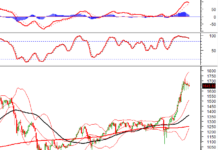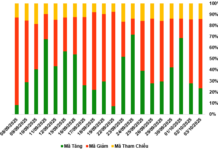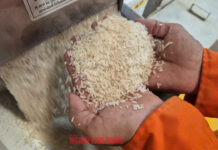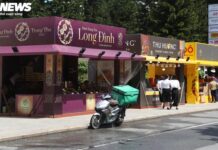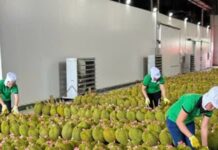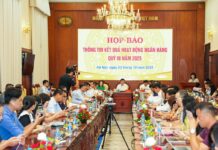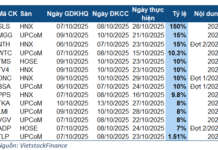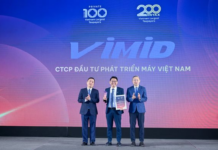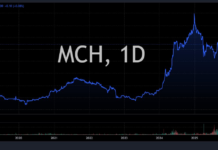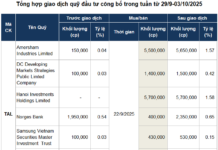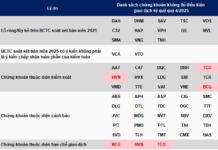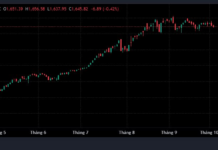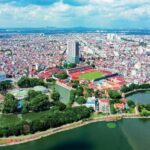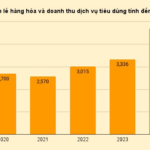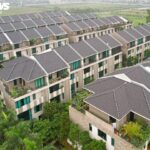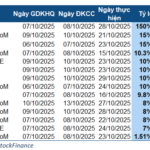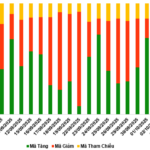Golden Age
The Trung Thuy Group is one of the leading real estate companies in Vietnam with a history spanning over 30 years. The group started in the handicraft industry with the Miss Ao Dai brand.
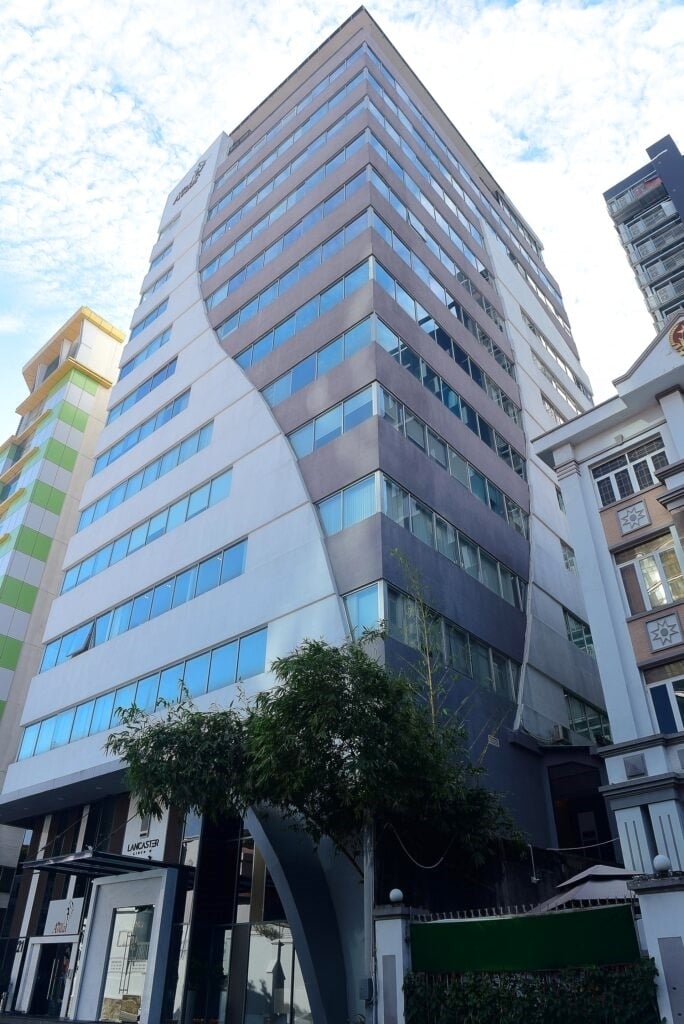
Miss Ao Dai building was once a symbol of the Trung Thuy Group’s prosperity. (Photo: B.L)
In 1982, Mr. Nguyen Van Trung and his wife, Mrs. Duong Thanh Thuy, started their business with a handicraft shop on Nguyen Hue Street, District 1, Ho Chi Minh City. In 1997, they decided to establish the “Miss Ao Dai” brand to differentiate themselves from other businesses.
This unique brand thrived due to its high-quality handicraft products and dressmaking services for customers from all over. With a large customer base, the Trung Thuy Limited Company was established in 2002. In the following years, the company successfully acquired prime land in Ho Chi Minh City through auctions and purchases, such as 22 – 22 Bis Le Thanh Ton and 21 Nguyen Trung Ngan (District 1)…
The 21 Nguyen Trung Ngan site was developed into the 15-story Miss Ao Dai building, marking the golden age of both the brand and the company. The 22 – 22 Bis Le Thanh Ton site became the Lancaster Le Thanh Ton project, one of the earliest luxury apartment and office building projects in the city.
In 2008, Trung Thuy expanded its operations to other cities and transitioned to a group model. From then until 2021, the Trung Thuy Group developed numerous projects in Hanoi and Ho Chi Minh City, including The Lancaster Nui Truc, Lancaster Luminaire, Dreamplex Tran Quang Khai, Dreamplex Thai Ha, Dreamplex Dien Bien Phu, Lancaster Lincoln, and Lancaster Legacy…
In other provinces and cities, the group also invested in projects such as the 100-hectare Trung Thuy High-end Resort in Xuyen Moc, Ba Ria – Vung Tau; Trung Thuy High-end Resort in Binh Thuan; Trung Thuy Resort in Dalat, and the Nam O Eco-tourism Area (Da Nang)… among others.
The Trung Thuy Group has also invested in several rest stops, including the famous Mekong Reststop in Tien Giang, Mekong Reststop Long Thanh in Dong Nai, and Mekong Reststop Hai Van in Da Nang. Additionally, the group has ventured into the beauty industry with the Sen Spa brand.
Delayed Projects and Declining Revenue
After a period of glorious development, the Trung Thuy Group began facing significant challenges, especially in the real estate sector.
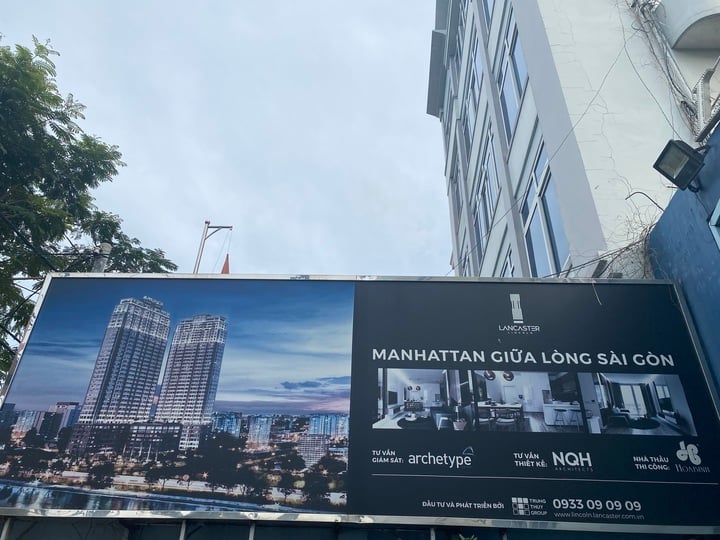
The Trung Thuy Group encountered difficulties in implementing real estate projects. (Photo: Dai Viet)
Recently, the Government Inspectorate concluded its inspection of the conversion of land use purposes from business production to housing construction at the Ministry of Transport during the 2011-2021 period. The inspection identified several violations in projects undertaken by the Trung Thuy Group.
Specifically, the Government Inspectorate found that Trung Thuy Lancaster Company (a member of the Trung Thuy Group) signed an investment cooperation contract to implement a condominium project with the Vietnam Shipping and Chartering Corporation (Vitranschart) at 428 Nguyen Tat Thanh, District 4, Ho Chi Minh City, without having sufficient land use rights as prescribed. This nearly 2,200-square-meter site has been stagnant for many years, resulting in a waste of social resources.
Additionally, at the 430 Nguyen Tat Thanh site, which spans over 4,600 square meters, Saigon Port and the District 4 Public Utilities One-Member Co., Ltd. transferred the land use rights to Trung Thuy Lancaster Company without organizing a bidding process as required. This project has also been stagnant for many years, leading to a waste of social resources.
According to VTC News, the two sites at 428 and 430 Nguyen Tat Thanh, with a total area of nearly 7,000 square meters in a prime location, have been “inactive” for many years. This is the area where the Trung Thuy Group has been developing the Lancaster Lincoln project, consisting of two 40-story towers, since 2016. The delay in project implementation has also led to modest revenue for the group.
In 2019, during the peak of the real estate market, the Trung Thuy Group’s revenue reached VND 127 billion, with a profit of VND 6 billion. In 2020, the group’s revenue remained at VND 132 billion, but the profit dropped to only VND 600 million. Thus, the profit decreased by 90% compared to the previous year, with a net profit margin of only about 0.45%.
In 2021, Trung Thuy’s revenue plummeted to VND 84 billion, with a meager profit of VND 300 million. This was an extremely low profit for the group in recent years. In 2022, the situation improved slightly, with revenue reaching VND 119 billion and profit reaching VND 18 billion. These figures reflect the volatile and unstable business performance of this “giant” in the real estate industry.
In 2023-2024, the Trung Thuy Group is implementing several important real estate projects, such as Lancaster Legacy and the Nam O Eco-tourism Area. The Nam O project had been stagnant for 13 years and has only recently restarted.
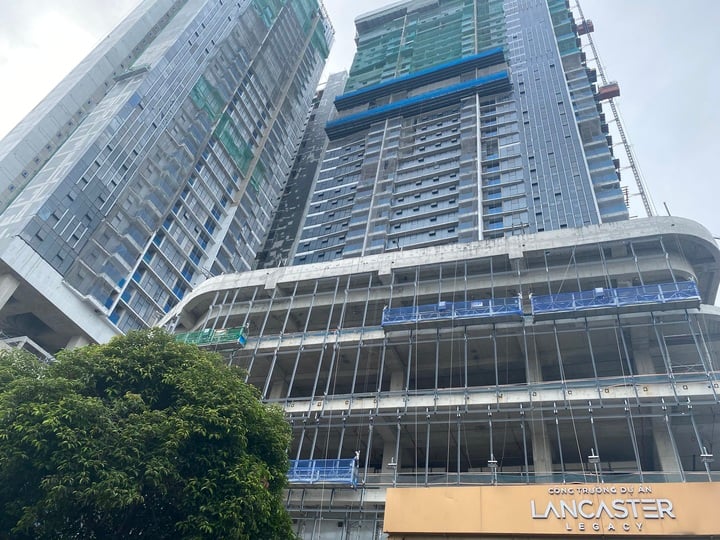
The Lancaster Legacy project is located on Nguyen Trai Street, District 1, Ho Chi Minh City, and is being offered at a price of about VND 230 million/sqm. (Photo: Dai Viet)
The Lancaster Legacy project comprises apartments, offices, and commercial-service spaces in a prime location on Nguyen Trai Street, District 1, Ho Chi Minh City. It has a scale of 38 floors, including 33 floors above ground and 5 basement floors. The market is offering apartments in the Lancaster Legacy project at a price of approximately VND 230 million/sqm. The project is currently under construction and completion.
The Nam O Eco-tourism Area project, located in Lien Chieu District, Da Nang City, and invested by the Trung Thuy Group, covers an area of 35 hectares, including 25 hectares of the project and 10 hectares of beachfront. The total investment capital for the Nam O Eco-tourism Area project is about VND 4,500 billion.
The project was planned in 2010 but remained stagnant until it was restarted in 2023. The 13-year stagnation has also consumed the resources of Trung Thuy and society.
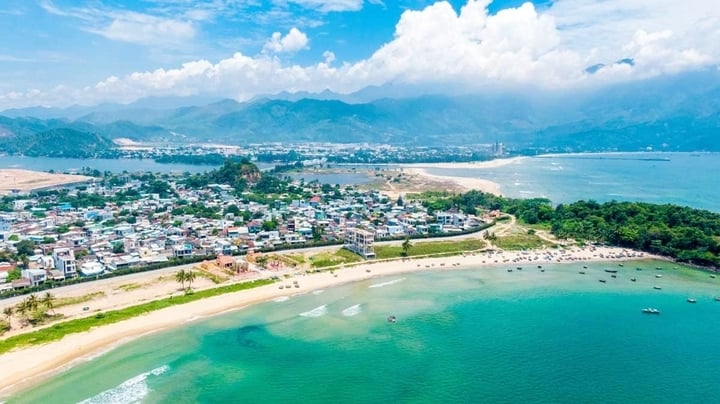
Trung Thuy’s project in Nam O, Da Nang, was “shelved” for 13 years. (Photo: B.L)
There are several reasons for the decline in Trung Thuy Group’s revenue. The primary reason is the delay in project implementation due to legal obstacles. Delays lead to increased costs, significantly impacting revenue.
Another reason is the intense competition in the real estate market over the past decade. The presence of numerous domestic and foreign enterprises vying for market share and the saturation of segments with competitors have made it challenging for Trung Thuy to maintain its market share, revenue, and profit.
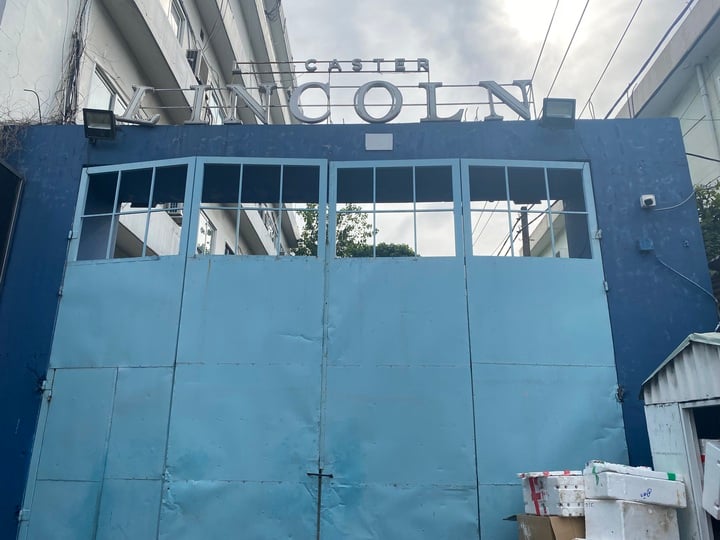
Projects entangled in legal issues and delays are a significant reason for the modest revenue of the Trung Thuy Group. (Photo: Dai Viet)
Additionally, ineffective cost management has contributed to the group’s declining performance. This is evident as revenue increased, but operating costs also rose, resulting in shrinking profits.
Furthermore, unforeseeable risks such as the COVID-19 pandemic and the global economic recession have significantly impacted high-end real estate businesses like Trung Thuy.
Currently, the Trung Thuy Group is owned by three family members. Mrs. Duong Thanh Thuy holds 80% of the shares, Mr. Nguyen Van Trung holds 10%, and Mr. Nguyen Trung Tin (son of Mr. Trung and Mrs. Thuy) owns 10%. Mr. Nguyen Van Trung is the Chairman of the Board of Directors and legal representative of Trung Thuy Group, while Mr. Nguyen Trung Tin is the General Director. The group’s charter capital is currently at VND 800 billion.
The Experimental Expansion of Commercial Housing Construction on Agricultural and Non-Agricultural Land: Concerns Over Soaring Housing Prices
Small businesses are often faced with an uphill battle when it comes to entering the market, as they lack the financial muscle to purchase land or bid on areas with development potential. Large investors with a land bank advantage for commercial projects in high-demand areas will continue to control sale prices to optimize their profits.
“The Fear of Missing Out on Property Purchases”
As the year draws to a close, the “race” to meet deadlines, ensure legal compliance, and launch projects intensifies. The pressure is on to deliver, with developers racing to meet milestones and buyers eagerly awaiting new opportunities. It’s a busy time for the industry, and the finish line is in sight.

